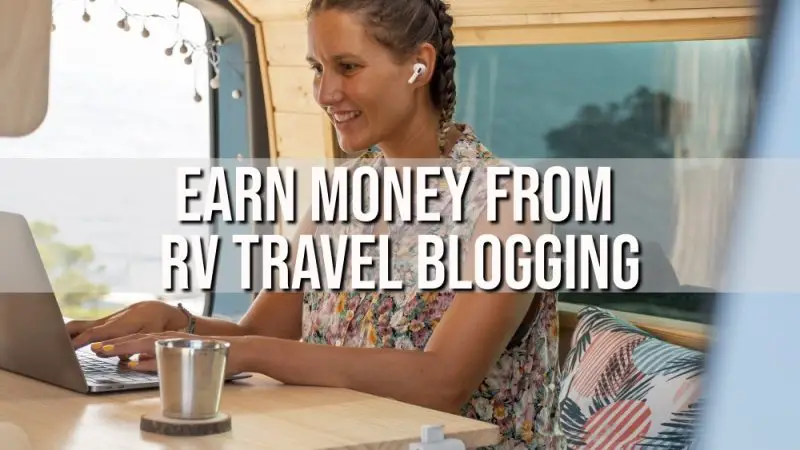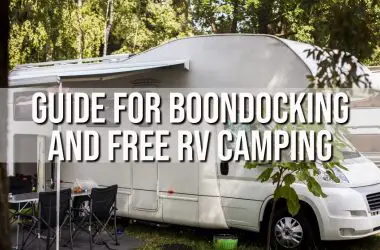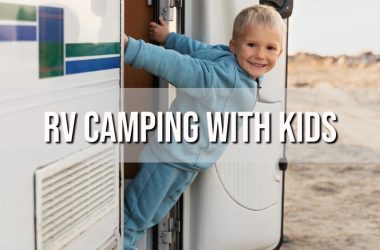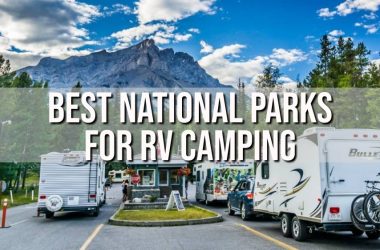For RV owners who love writing and photography, launching a blog about their travel adventures can be an enjoyable way to earn money from RV travel blogging and turn their passion into a profitable endeavor. As the RV lifestyle grows in popularity, there’s an expanding audience eager for firsthand tips on destinations, products reviews, DIY upgrades and more. Savvy bloggers can translate their journeys into income through strategic website setup, engaging content creation, social media marketing, and effective monetization tactics. This comprehensive guide covers key tips for RV travel bloggers ready to earn money from their experiences on the road. With dedication and smart planning, your recreational vehicle website can fuel the traveling lifestyle you love.
Key Takeaways
- Create optimized, high-quality content covering RV mods, destinations, reviews, lifestyle tips and more. Include plenty of photos/videos.
- Promote your blog content through social platforms like Facebook Groups, Instagram and YouTube.
- Monetize through affiliate links, display ads, sponsored posts, products, and services.
- Forge partnerships with RV brands, campgrounds, and other travel bloggers for cross-promotion.
- Analyze site metrics regularly to identify high-performing content and areas for improvement.
- Consistency, patience, creativity and business savvy are key for earning income blogging about RVing.
Understanding RV Travel Blogging

An RV travel blog allows you to document your journeys and share first-hand experiences with fellow RVers. Unlike casual Facebook updates, an RV blog is specifically designed for discovery by search engines and avid readers. By creating helpful, inspiring content optimized for specific keywords, you can build a dedicated audience who regularly visits your site for ideas, tips, reviews and more. The RV community is an incredibly engaged, passionate group who want real-world perspectives from fellow travelers “in the trenches”. An RV blog allows you to establish yourself as an authority offering valuable insights others can trust.
Blogging requires dedication – consistently publishing fresh content over months and years leads to organic growth and loyalty. But with time and persistence, content and traffic gradually snowball. An established site starts ranking well in Google for RV-related terms, directing waves of readers your way. Through smart monetization strategies, you can start generating side income from display ads, affiliate links, products, and sponsorships. Some successful bloggers even build RV blogging into a full time job or business, creating online courses, e-books, consulting services and more. With focus, consistency and good business acumen, the freedom-loving RV lifestyle can effectively fund itself through a profitable travel blog.
Setting Up Your RV Travel Blog
The foundation of a successful RV travel blog is the website itself. Invest time upfront finding the ideal platform, domain name, layout, and navigation flow.
When selecting a website builder, user-friendly options like WordPress.org, Squarespace or Wix make it easy to create an attractive, functional site, even without extensive coding skills. These platforms offer both free and paid plans that include the domains, web hosting, storage, and SEO features you’ll need as your blog grows. WordPress in particular has thousands of plugins, themes, and customization options tailored to blogging, while still being intuitive enough for beginners. For an RV blog just getting started, a free WordPress.com site may suffice, but upgrading to WordPress.org for more control is recommended as traffic increases.
Choosing a short, memorable domain name with relevant keywords like “RV”, “travel”, “journey”, “adventure”, etc. will make your blog easy to find and remember. For example, TheRVJourney.com or RVAdventureTime.com incorporate both RV and travel references. Adding website hosting expands your storage capacity and bandwidth as needed to manage large amounts of multimedia content.
Thoughtful website design is also important – aim for clean, uncluttered layouts that render well on both desktop and mobile. Pick a cohesive color scheme and font pairing that is pleasing to read. Incorporate plenty of high-quality photos to bring your journey to visual life. Minimize ads and popups which detract from user experience. Craft compelling page titles and meta descriptions to improve click-throughs.
Structure your navigation logically, with main tabs or drop-down menus covering key sections like Blog, About Us, Products, Services, Contact, etc. Make important pages and posts easy to link to internally. Install SEO plugins like Yoast to optimize on-page elements like meta titles across all posts and pages for consistency.
Include visible social media follow buttons to enrich engagement. Provide email list sign-up forms for subscribers. Add affiliate disclosure statements where appropriate to set clear expectations with visitors. These elements help build community and trust.
Investing sufficient time upfront in a professional, user-friendly website provides the stable foundation upon which you can then grow your readership and earn money long-term through high-value content.

Content Creation for RV Travel Blogging
Consistently publishing quality content is the heart of running a successful RV blog. Target keywords and topics that inspire you personally and align with the interests of RV owners hungry for real-world insights from other travelers. Photos, videos, reviews, tips, roundups, and stories from the road will engage readers looking for actionable advice.
Writing Engaging Content
Aim to blog detailed first-hand reviews of RV parks, campgrounds, travel destinations, and local attractions you visit. Describe amenities, scenery, price points, activities, and important factors like pet friendliness or big rig accessibility. Create posts with tips for selecting gear, modifying rigs, maintaining systems, driving and towing, boondocking, storage solutions, and organization hacks tailored to small RV spaces. Include pros, cons and best uses for RV products based on your real-world testing.
Share fun behind-the-scenes stories and photos highlighting the misadventures, mishaps, and memorable characters you encounter during your travels. While RV life is glamorous at times, it’s the funny, relatable anecdotes that build a personal connection with readers.
Write roundup comparison posts like “The 10 Best RV GPS Devices” or “Top Pet-Friendly National Park Campgrounds for RVers” to synthesize your first-hand recommendations into one place. Help readers make more informed purchasing decisions on must-have gear, accessories, camp sites, and other RV essentials.
Repurpose your content into multiple formats like top takeaway bullets, pros/cons charts, short videos, graphics, or podcast interviews. Identify new angles on evergreen RVing topics that continue generating interest years later.
Photography and Videography
Showcase destinations and campgrounds with vivid, high-quality photos. Include people RVing and embracing the lifestyle for maximum appeal. Capture scenic landscapes and nature shots from beautiful locations. Use natural lighting, the rule of thirds, leading lines, contrast adjustments and other photographic techniques for visual impact. Edit photos afterwards to optimize brightness, color, cropping, etc.
Invest in compact, lightweight camera gear like mini tripods, clip-on smartphone lenses, drones, and GoPros to level up your photo and video quality from basic phone shots.
Capture exciting lifestyle videos touring your RV, traveling down scenic roads, camping at sights, demonstrating gear, tackling upgrades, and engaging in popular RV activities. Let potential readers envision themselves embarking on similar adventures. Vivid videos and vlogs bring the spirit of RV freedom and travel to life.

Optimizing for SEO
To attract ongoing organic traffic from search engines over time, RV blogs need strategic optimization across key areas:
Keyword Research
Identify the most popular terms RV owners are searching for by analyzing Google Keyword Planner data and search volume metrics. Look for common themes like best RV GPS devices, RV camping near me, family-friendly RV travel destinations, off-grid camping tips, etc. Include specific long tail keyword versions as well, like “off-grid RV camping in Colorado” for localized targeting. Use semantic keyword sets around topics to fully cover subtopics in an organized fashion.
Research which keywords your competitors rank highly for, and identify gaps where you can edge in with focused, optimized content tailored for those terms. Avoid directly competing for the most competitive keywords right away – target longer mid-tail versions.
On-Page SEO
Optimize on-page elements by featuring primary keywords in headlines, URLs, meta descriptions, image names, photo alt text, and naturally within the content itself. Craft compelling meta descriptions using keywords visitors actually search for to increase click-throughs.
Structure content using bolded subheadings labeled with keyword phrases to improve overall scannability. Add useful contextual links to related internal content and authoritative external sources, which helps build domain authority over time.
Backlink Building
Create genuinely useful, shareable content optimized for organic spread through social shares, embeds, quotes, brand mentions, etc. Guest post on niche RV blogs and magazines to earn contextual editorial backlinks and added exposure.
Promote and distribute content across relevant niche forums, RV Facebook Groups, Reddit threads, LinkedIn Groups and more to gain backlinks through community conversations.
Build direct relationships with other RV travel bloggers and influencers in the space to coordinate link swaps, cross-promos, and collaborative content deals.

Social Media Promotion
Promoting blog content across social platforms helps exponentially increase reach and engagement. Tailor content types for top platforms:
Facebook Marketing
- Join established RV Facebook Groups to share posts and interact with members. Provide value to gain trust.
- Run educational Facebook live videos to engage followers. Answer RV questions from viewers.
- Create native videos under 60 seconds optimized for Facebook sharing and viewability.
- Leverage Facebook ads to promote products, services or attract email subscribers from targeted demographics.
Instagram Marketing
- Post stunning RV travel destination images and short scenic video clips from the road.
- Use relevant hashtags like #RVlife, #rvlifestyle, #RVing to connect with the community. Engage with influencers.
- Promote products with beautiful lifestyle images of RVers using them blended with travel content.
- Run Instagram Story polls, Q&As and slideshows to engage followers and get feedback. Highlight blog content.
YouTube Marketing
- Upload fun, informative RV vlogs, tour videos, gear reviews, how-tos and interviews.
- Create eye-catching custom thumbnails and titles optimized with keywords to rank in Youtube Search.
- Promote videos across social media, forums, and blog posts and link back to grow YouTube following.
- Join the Youtube Partner Program once you hit 1,000 subscribers and 4,000 hours of watch time to earn ad revenue.

Monetizing Your RV Travel Blog
With high-quality content drawing consistent traffic to your site, you can start employing strategic monetization strategies to earn income:
Affiliate Marketing
Join affiliate programs with major RV retailers like Camping World, RV part suppliers, RV rental companies, and other travel or outdoors brands relevant to your audience. Insert affiliate text links and banners into blog posts where you recommend related products. When readers make qualifying purchases after clicking your links, you earn attractive commissions.
Where appropriate after thorough testing, publish in-depth personalized reviews and demonstration videos of RV products you own and recommend affiliation. Provide unique perspectives only possible through long-term use. Ensure all affiliate links have clear disclosure statements so readers understand they are monetized recommendations.
Increase conversions by only actively promoting brands you genuinely know and trust after first-hand experience. Never exaggerate or misrepresent products solely for earnings. Established authority earns consistent clicks and sales vs. hard sells.
Sponsored Posts
Invite RV related brands that align with your audience to sponsor specific posts – provide products for thorough reviews and demos in exchange for an agreed upon sponsorship fee. Ensure you retain full editorial control over the content created.
Negotiate fixed sponsorship rates and package options like including brand banners/links within posts. Set appropriate fees based on your site’s traffic, audience demographics, and influence. Make expectations clear.
Ensure sponsored posts match your site’s voice and appeal organically to regular readers. Avoid disjointed sales pitches. Blend sponsorships into helpful content so readers gain value before considering purchasing.
Selling Products or Services
Self-publish e-books, guides or online courses based on your RV travel expertise for sale on your site integrated with payment processing. Offer RV maintenance, repair, or upgrade consulting services if qualified.
Design and sell useful informational products like checklists, video tutorials, logo sticker sets, trip planning templates, etc. for digital delivery or print-on-demand. Leverage your RV knowledge into marketable resources

Building Relationships With Other RV Bloggers
Connecting with fellow RV travel bloggers can lead to mutually beneficial partnerships:
Follow each other on social media platforms like Instagram and Twitter and interact regularly through comments, shares, mentions, etc. Organically engage with each other’s audiences.
Share and promote relevant posts from each other’s sites with your own audiences when the content adds value. Cross-promotion expands reach and saves time creating new content.
Strategically swap guest posts to introduce each other’s websites and writing to new readers. The outbound links help SEO while showcasing expertise.
Team up on collaborative projects like co-creating online courses, ebooks, or guides to sell – combining knowledge bases expands the end product’s appeal.
Refer relevant sponsorship opportunities and business contacts to each other to reciprocate value. Relationships with other bloggers provide ongoing support.
Maintaining Consistency and Quality
Posting engaging content consistently should become a publishing habit. But also focus on continuous improvement:
Analyze site metrics like traffic sources, page views, scroll depth, time on site, and engagement to identify your best-performing content formats and topics. Double down on more of what succeeds based on data.
Keep experimenting with new types of posts (video, podcasts, etc) and multimedia elements to keep content fresh, dynamic, and engaging for regular readers.
Stick to consistent posting schedules (e.g. 2x per week) even during busy travel periods. Draft and auto-schedule blog content in advance when necessary to prevent gaps.
Closely monitor comments and social media discussions to respond promptly. Seek to deliver value with every reader interaction through the community you build.
Evaluating Your Progress
Tracking performance regularly identifies opportunities:
Use analytics platforms like Google Analytics to monitor key metrics – traffic volume, visitor demographics, page views, bounce rates, etc. Review frequently.
Check search engine rankings for target keywords in Google and YouTube monthly to gauge progress. Expect gradual, steady improvement over time through consistency.
Measure social media followers growth, engagement rates, referral traffic, clicks, and conversions from ads and affiliate links. Adjust strategies accordingly.
Set realistic goals for income, traffic, email subscribers, and social media followers growth. Re-evaluate what’s working on a quarterly basis and change course if certain strategies underperform. Continual optimization is key.
Conclusion of How to Earn Money From RV Travel Blogging
Transforming RV adventures into an income stream is achievable through consistent blogging optimized for search and social visibility. Dedicate yourself to publishing high-quality content, forging connections and promoting strategically. Analyze metrics to continuously improve reach and monetization results. With time, creativity and determination, it’s possible to build your RV travel blog into a profitable asset and community that funds future journeys. Soon you’ll be earning your way along the open road.
Frequently Asked Questions
What are some ways to monetize a travel blog?
Some popular ways to monetize a travel blog include affiliate marketing, sponsored posts, display advertising, selling online courses/guides, licensing travel photos, and offering consulting services. Diversifying income streams is key.
Can RV travel blogging be a profitable career?
Yes, RV travel blogging can become a profitable full-time career with dedication and consistency. It requires time to build traffic and income, but top RV bloggers earn 5-6 figures annually. Hard work, business savvy and creativity are musts.
What are some popular workamping jobs for RVers?
Common workamping gigs include campground hosts, seasonal resort staff, theme park attendants, state/national park jobs, recreation management, tour guides, salesmen, freelance writers, virtual assistants, etc.
How can I increase traffic to my RV travel blog?
Strategies to gain more site traffic include SEO optimization, content promotion on social media, email lists, collaborations with influencers, and guest posting on other blogs. Focus on high-quality content as well.
Do travel bloggers need to disclose sponsorships and partnerships?
Yes, ethical disclosure of paid sponsorships and material partnerships is a legal requirement by the FTC to avoid misrepresentation. Always be transparent.
What are some tips for creating engaging content on an RV travel blog?
Share useful tips, tell stories, use vivid images/videos, convey your passion for RVing, tap into RVer pain points, create guides/roundups, and infuse your unique personality into posts to engage readers.






